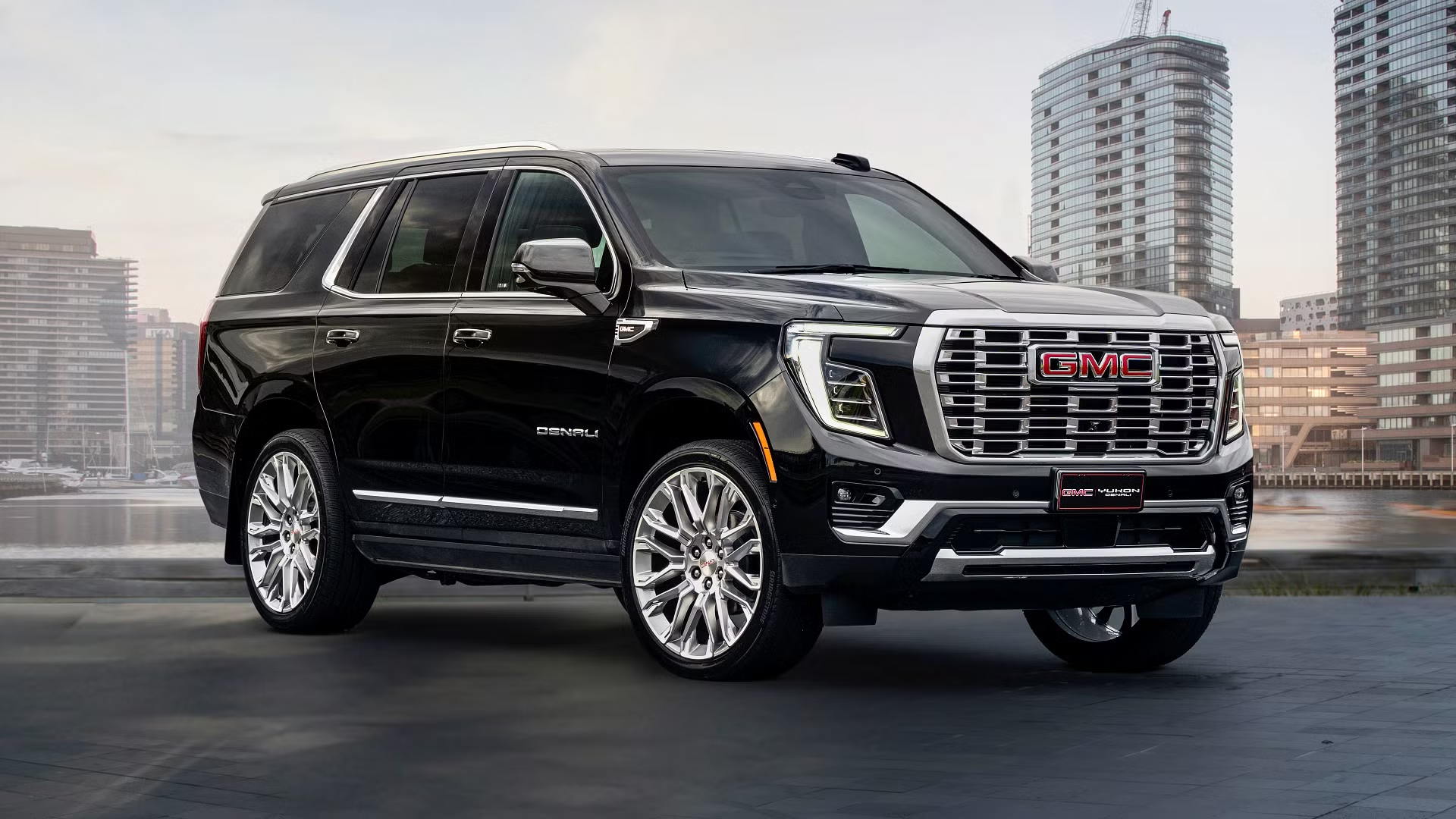When it comes to purchasing a family SUV, parents typically have a clear understanding of what they’re looking for. More often than not, safety ranks as the number one priority.
However, beyond that, the list of requirements can vary greatly. Some parents might be satisfied with an affordable vehicle that accommodates the whole family and provides a reasonable amount of trunk space.
Others might prioritize comfort above all, including the desire for a third row of seating. Sometimes, the decision is heavily influenced by geographic location such as whether you reside in an urban environment or a mountainous region.
SUVs That Fit All the Kids and Groceries
These professionals, who also happen to be parents of children (and pets) across various age groups, test-drive vehicles as part of their everyday work.
Our goal is to present you with insights into SUVs from the perspective of people who would actually drive them.
With that in mind, we’ve compiled a list of our top picks for the best SUVs for families to help you find the vehicle that aligns with your specific needs.
Chevrolet Traverse
Completely redesigned for 2024, the Chevy Traverse stands out as one of the most family-oriented choices in the competitive midsize 3-row SUV segment.
It features a spacious third row and offers a class-leading maximum cargo capacity of 97.6 cubic feet.
The new turbocharged 4-cylinder engine delivers more horsepower and torque compared to the previous V6 model, all while maintaining the same fuel efficiency rating.
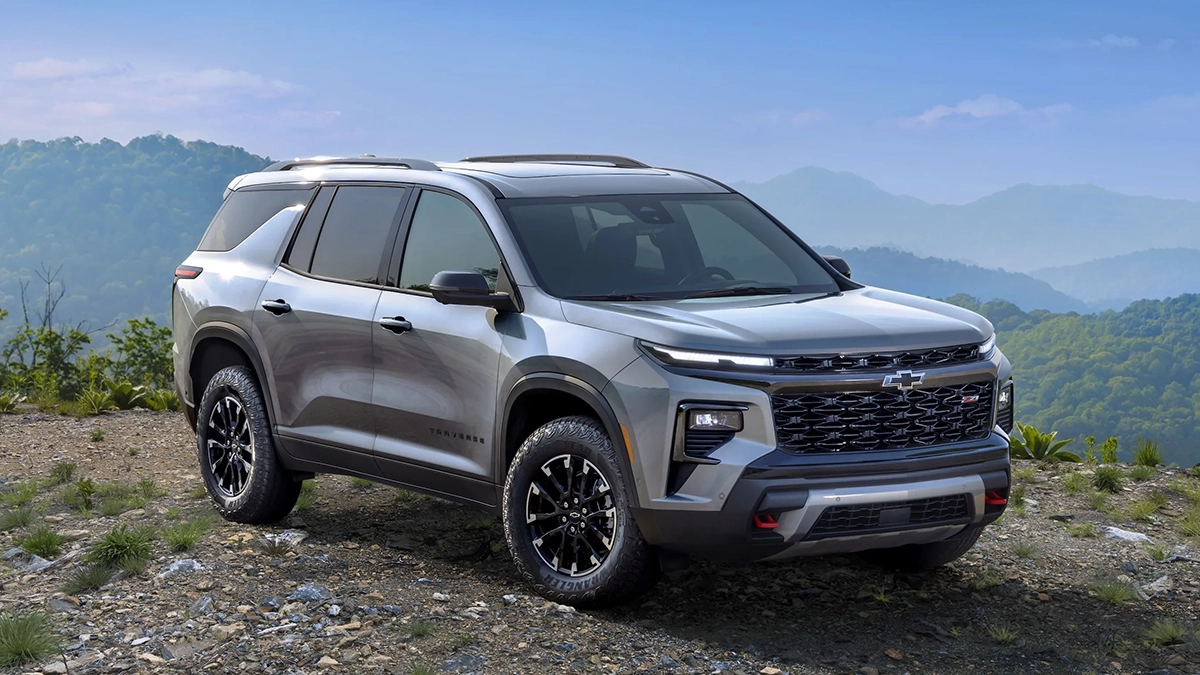
The lineup includes the rugged Z71 variant and the sporty RS trim, providing a diverse range of options to appeal to different preferences.
One of the standout features of the Traverse is the available Super Cruise hands-free driving system. Having personally experienced it in a Cadillac Escalade, I can attest that Super Cruise significantly reduces the strain of long family road trips.
It’s great to see this kind of hands-free driving technology offered at a more accessible price point than the Escalade.
The 2025 Chevrolet Traverse has several standout qualities. Among its pros are a strong turbocharged four-cylinder engine, an impressive list of standard features, a massive infotainment touchscreen, and the highly advanced Super Cruise driver assist system.
However, it’s not without its downsides. The engine becomes noticeably loud when pushed hard, and the interior suffers from the use of cheap-feeling plastic materials and trim that detract from the cabin’s overall quality.
This year brings a few key changes. The base LS trim has been dropped, while the upscale High Country trim has been added to the lineup. These updates are part of the third generation of the Traverse, which debuted with a full redesign in 2024.
For shoppers looking for a capable three-row SUV but wanting to avoid the bulk and relatively poor fuel economy of the Chevrolet Tahoe, the 2025 Traverse offers a smart alternative.
Though it’s shorter than the Tahoe, the Traverse shares the same wheelbase — the distance between the front and rear wheels — and provides nearly identical cargo space behind the third row. Front and second-row passengers will find similar levels of headroom and legroom.
While the third row is a bit tighter, it remains adult-friendly. Crucially, the Traverse is also more budget-friendly than the Tahoe. The model’s 2024 redesign brought substantial upgrades, and for 2025, Chevrolet has made some tweaks to trim levels and the availability of certain features.
When it comes to operating costs, Edmunds estimates the monthly cost to drive the 2025 Chevrolet Traverse LT 4dr SUV (2.5L 4cyl Turbo 8A) at around $169 per month, based on 15,000 miles annually with a driving mix of 55% city and 45% highway, and fuel priced at $3.13 per gallon for regular unleaded in North Dakota. In comparison, the average large SUV comes in at around $226 per month under the same conditions.
The LT trim is expected to be the volume seller due to its competitive pricing and generous standard equipment, which includes a large 17.7-inch touchscreen and a robust suite of driver assistance technologies.
For those looking to tailor their vehicle further, the LT trim also supports three significant optional packages. Adventurous drivers or those who appreciate a more rugged SUV design should consider the Z71 trim, which comes with all-terrain tires and a suspension tuned specifically for off-road use.
Meanwhile, the newly introduced High Country trim is aimed at buyers seeking a more luxurious experience, boasting leather upholstery, heated and ventilated front seats, and an extensive array of tech features — including the Super Cruise hands-free driving system. On the sportier end of the spectrum is the RS trim, which offers a darker aesthetic and includes most of the available features as standard.
While the Traverse excels in interior space and technology, it isn’t the only strong contender in the midsize three-row SUV category. The Kia Telluride and Hyundai Palisade continue to earn praise for their refined ride quality and upscale interiors, remaining two of Edmunds’ top picks in the segment.
Additionally, the Toyota Grand Highlander — which offers more space than the standard Highlander and a fuel-efficient hybrid powertrain — stands out as another compelling alternative.
Chevrolet Trax
Not every family is looking to spend $40,000 on a vehicle. The 2024 Chevy Trax presents a smart and affordable alternative, delivering impressive interior space at a budget-friendly starting price of $21,495, which includes destination charges.
Average-sized adults can sit comfortably in the rear seats. Behind them, you’ll discover 25.6 cubic feet of cargo space an impressive figure for a subcompact SUV.

The Trax earns its SUV label with a convenient step-in height that enhances accessibility. However, it’s important to note that all-wheel drive is not offered on the Trax.
If your family’s travels require all-wheel traction, the Subaru Crosstrek is a worthy alternative within a similar price range. Describing a vehicle as “cheap” can sound dismissive, so it’s more appropriate to highlight that the Chevrolet Trax offers a notably low starting price, which plays a major role in its appeal.
As one of the most affordable new vehicles available today, this subcompact SUV delivers excellent value. It impresses with a spacious interior and a pleasant driving experience that goes beyond what you’d expect from a vehicle in this price range.
While it does make some concessions compared to more expensive alternatives—its 137-horsepower three-cylinder engine isn’t particularly powerful, and it comes only in a front-wheel-drive configuration—it makes up for these drawbacks with a generous list of standard features and a stylish design inside and out. The Trax currently ranks first on our list of Best Subcompact SUVs. At the top of the list is the Chevrolet Trax, starting at $21,895.
It’s followed by the Mazda CX-30, which starts at $26,415; the Buick Envista at $25,195; the Volkswagen Taos at $26,420; the Kia Niro Hybrid at $28,385; and the Subaru Crosstrek at $27,980. This ranking reflects the Trax’s overall value, features, and performance within the subcompact SUV segment.
For 2025, Chevrolet has introduced a few updates to the Trax. Two new exterior colors—Cypress Gray and Marina Blue Metallic—have been added to the lineup, and the engine has been modified to run on E85 fuel, providing more flexibility in fuel options.
The pricing for the 2025 Chevrolet Trax starts at $21,895 and goes up to $25,895 depending on the trim and optional features selected. The breakdown of trims is as follows: LS at $21,895, 1RS at $23,895, LT at $24,095, 2RS at $25,895, and ACTIV at $25,895.
Despite its competitive pricing, the Chevy Trax offers a range of appealing features. The LT trim, in particular, represents the sweet spot between affordability and equipment. It comes equipped with a large 11.0-inch infotainment touchscreen and remote start.
For added comfort, we recommend opting for the available heated front seats and heated steering wheel. Additionally, wireless Apple CarPlay and Android Auto come standard on LT and higher trims, making it easy to connect your smartphone for navigation and music streaming.
Under the hood, the Trax features a modest yet capable powertrain: a 137-hp turbocharged 1.2-liter inline-three engine paired with a six-speed automatic transmission and front-wheel drive. All-wheel drive is not available, even as an option. Around town, the Trax provides enough power to feel adequate, but its limited output becomes apparent when merging onto highways or passing at higher speeds.
That said, its conventional six-speed automatic transmission offers smoother and more consistent shifts compared to the continuously variable transmissions (CVTs) found in some competitors, such as the Honda HR-V and Subaru Crosstrek.
The Trax benefits from a carlike driving character, with handling that feels nimble and more agile than many rivals. The brake pedal delivers a firm, confident response, and the steering feels predictable and reasonably responsive, which is impressive for a vehicle designed primarily for practical transportation.
Also Read: 5 SUVs With Nightmarish Repairs and 5 That Are Surprisingly Easy
GMC Yukon
When you’re looking for a vehicle that blends comfort with rugged capability, the GMC Yukon stands out as an ideal choice.
Its off-road variants are built to handle tough terrain and offer impressive towing power, yet the Yukon doesn’t sacrifice interior luxury it remains roomy and exceptionally comfortable.
The GMC Yukon and its extended-length counterpart, the Yukon XL, carry a not-so-secret truth: despite their premium image and distinct design elements, they are fundamentally built on the same architecture as the Chevrolet Tahoe and Suburban.
That’s actually a strong selling point, as GM’s full-size SUVs come with a selection of two proven V-8 engines as well as an efficient, torque-heavy diesel engine capable of up to 27 mpg on the highway. The Yukon lineup benefits from an independent rear suspension, which significantly improves ride comfort and handling over the previous generation’s solid rear axle.
Inside, you’ll find seating for up to eight passengers spread across three rows, along with an abundance of cargo space and accommodations for active lifestyles. The Yukon is highly configurable, ranging from more modest trims to the luxurious Denali and Denali Ultimate versions.

Still, there’s ample distinction between the Yukon and the Cadillac Escalade—which shares much of its mechanical foundation with the GMC and Chevy—when it comes to overall luxury, bold styling, and advanced technology, which helps justify the price premium of the Cadillac. Recognized as one of our top choices in its category, the 2025 GMC Yukon has earned a place on our Editors’ Choice list.
In terms of market ranking, the GMC Yukon and Yukon XL hold the number two spot on our list of Best Full-Size SUVs. Leading the pack is the Chevrolet Tahoe, starting at $61,195. The Yukon and Yukon XL follow with a starting price of $69,395.
The Chevrolet Suburban ranks third at $64,195, the Nissan Armada is fourth at $59,530, the Jeep Wagoneer holds the fifth position at $62,040, and the Ford Expedition and Expedition Max round out the list at $63,995. This competitive group underscores how well the Yukon holds its own in a segment crowded with capable entries.
For the 2025 model year, the Yukon gets a number of cosmetic and functional updates. There’s a newly restyled front fascia featuring updated grille and headlight designs. The Yukon now features animated lighting elements at both the front and rear.
In a first for the model, large 24-inch wheels come standard on the Denali Ultimate and are available as an option on the standard Denali. The trim lineup sees changes too, with the new Elevation model taking over for the outgoing SLE and SLT trims.
Another addition is the AT4 Ultimate, which combines the off-road prowess of the AT4 with high-end features such as massaging front seats, full-grain leather upholstery across all three rows, and open-pore wood interior accents. The Denali Ultimate receives further enhancements including available second-row executive seating and a powerful 22-speaker Bose sound system.
A notable new tech feature is GM’s night vision system with thermal object detection, while the infotainment system now employs a vertically oriented 16.8-inch touchscreen. On the powertrain side, updates are limited to an upgraded version of the Duramax 3.0-liter diesel inline-six engine.
Pricing for the 2025 GMC Yukon and Yukon XL starts at $69,395 and extends up to $103,995, depending on the selected trim level and added features. The Elevation trim is priced at $69,395, the AT4 at $76,395, the Denali at $79,695, the AT4 Ultimate at $97,995, and the Denali Ultimate tops the range at $103,995.
Unless you’re regularly chauffeuring VIPs, the Elevation trim strikes the best balance between cost and content. However, for those who need capability in remote or rugged environments, the AT4 is better suited. The 2025 Yukon is expected to go on sale before the end of the year, and more detailed pricing information will be updated as it becomes available.
The Yukon offers a trio of engine choices, including two gasoline-powered V-8s and a diesel option. The 355-horsepower 5.3-liter V-8 is standard on both the Elevation and AT4 trims.
For those opting for the Denali or Denali Ultimate, a more robust 420-horsepower 6.2-liter V-8 comes standard and is also available for the AT4. All models can be equipped with the improved Duramax 3.0-liter diesel inline-six, which now delivers 305 horsepower and a potent 495 pound-feet of torque, up from 277 horsepower and 460 pound-feet.
Every Yukon features a 10-speed automatic transmission and offers either rear- or all-wheel drive. One small but welcome update for 2025 is the relocation of the gear selector from dashboard-mounted buttons to a more intuitive steering-column-mounted lever.
The AT4 model is tailored for off-road use, featuring a two-speed transfer case, 20-inch wheels with all-terrain tires, underbody skid plates, and an optional air suspension that adds up to two inches of ground clearance. While each powertrain offers solid performance, we find the diesel engine especially fitting for the Yukon due to its strong low-end torque and superior fuel economy, making it an excellent match for this large SUV’s capabilities and purpose.
Honda CR-V Hybrid
If your family doesn’t yet require three rows of seating, there’s a strong possibility that a Honda CR-V Hybrid will meet all your needs.
The CR-V holds the title of our highest-rated compact SUV for 2024 the one we consider the best option for most drivers and its gas-electric hybrid model boasts an impressive 40 miles per gallon.
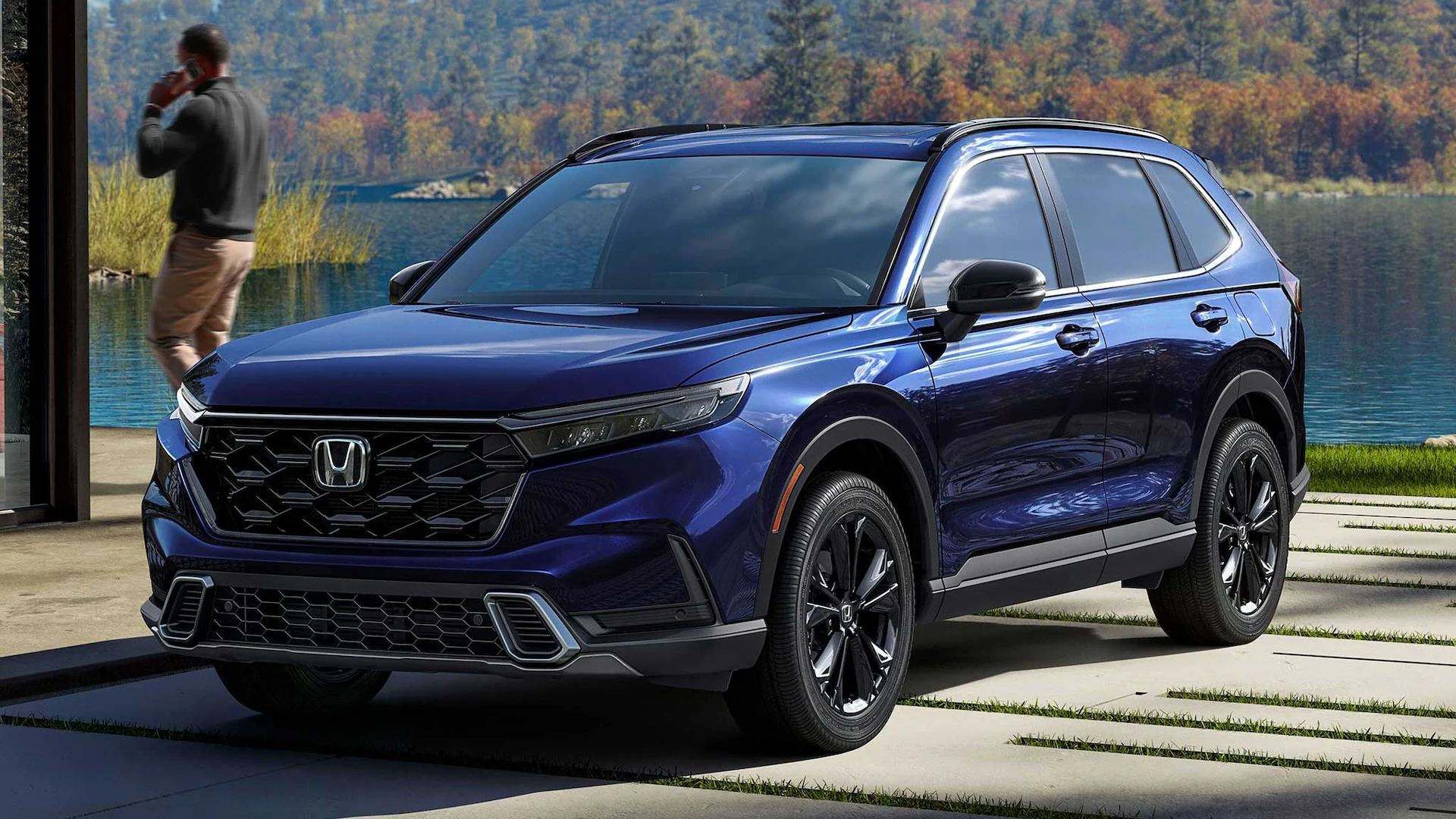
It’s also more responsive and enjoyable to drive than the standard gas-powered CR-V. As Honda’s top-selling model, it ranks among the most spacious compact SUVs available and is especially accommodating for child car seats.
Moreover, its high resale value supports future family budgeting, as earning more from a resale can lead to a larger down payment and reduced monthly payments on your next vehicle maybe even a 3-row SUV.
Also Read: 5 Cars With the Best Engine Cooling Systems and 5 Prone to Overheating
Honda Pilot TrailSport
The Honda Pilot fulfills all the essential requirements for family use, providing generous cargo capacity, a third row that comfortably accommodates adults, and a smooth, composed driving experience.
But when equipped with the TrailSport trim, the Pilot’s adventurous capabilities are significantly enhanced. It’s not just about rugged looks.
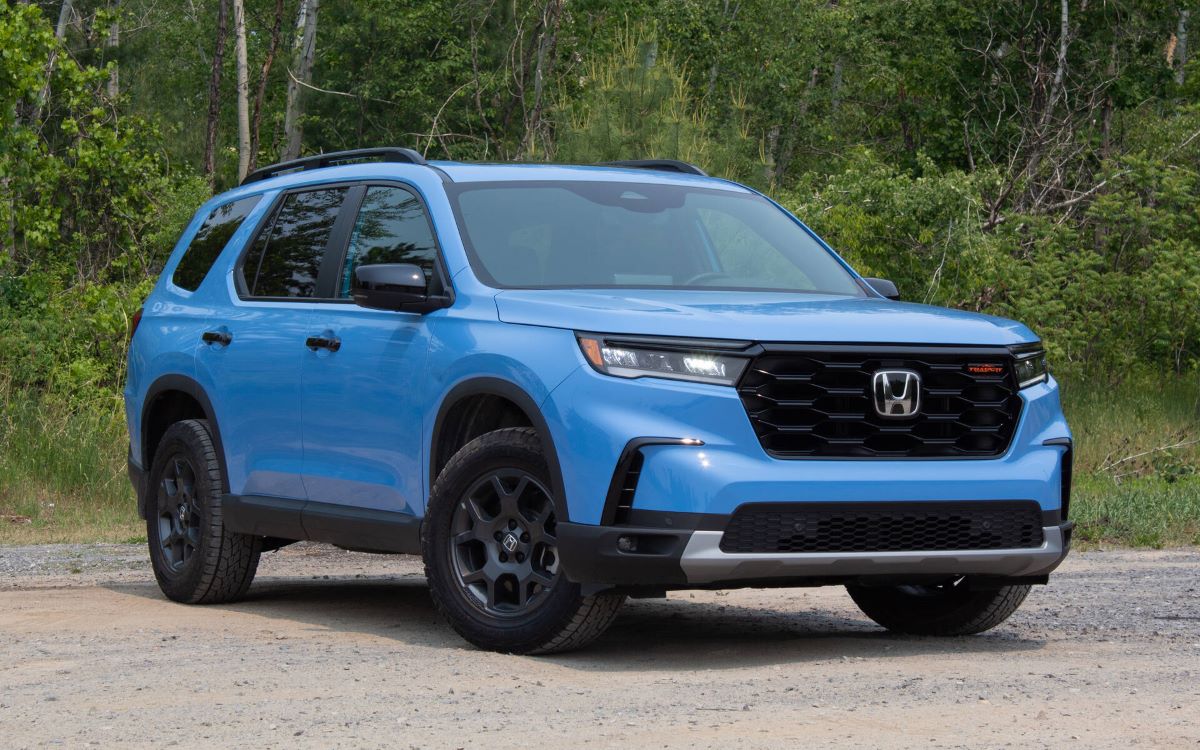
The Pilot TrailSport features a torque-vectoring rear differential, off-road-tuned suspension, all-terrain tires, and protective underbody skid plates, allowing it to tackle intermediate off-road trails with confidence terrains where lesser SUVs would struggle to maintain traction.
SUVs That Never Have Enough Space
The days when driving a small 4×4 on the highway felt like riding in a noisy tractor encased in a flimsy, boxy shell are long gone.
While the latest models might not perform quite as impressively off-road as their predecessors, they offer significant improvements in safety, comfort, features, and on-road drivability.
To help you navigate the increasingly crowded subcompact crossover segment, the expert editors at Autobytel have curated a list of the smallest 4×4 SUVs that deserve your attention whether you’re actively shopping or just browsing out of curiosity.
Keep reading to explore your options and see if any of these vehicles catch your interest.
2018 Hyundai Kona
The Hyundai Kona stands out as one of the most stylish and budget-friendly options on our list, with an all-wheel-drive version starting at $22,450.
It offers two engine choices: a 147-hp 2.0-liter four-cylinder paired with a 6-speed automatic transmission, or a 175-hp turbocharged 1.6-liter four-cylinder coupled with a 7-speed dual-clutch transmission.

Both powertrains deliver a combined fuel economy rating of 27 mpg.The Kona delivers a smooth and comfortable ride, and it’s unexpectedly enjoyable to drive especially with the more powerful engine under the hood.
The primary drawback is its compact interior, but for many buyers in this segment, it’s not a dealbreaker. With the rear seats folded down, there’s still ample cargo space to accommodate luggage for two.
2018 Jeep Renegade
As you might expect, the Jeep Renegade ranks as the most off-road capable vehicle on our list particularly the Trailhawk version making it the ideal choice for those who occasionally venture off the beaten path or live in areas where roads can remain unplowed for extended periods.
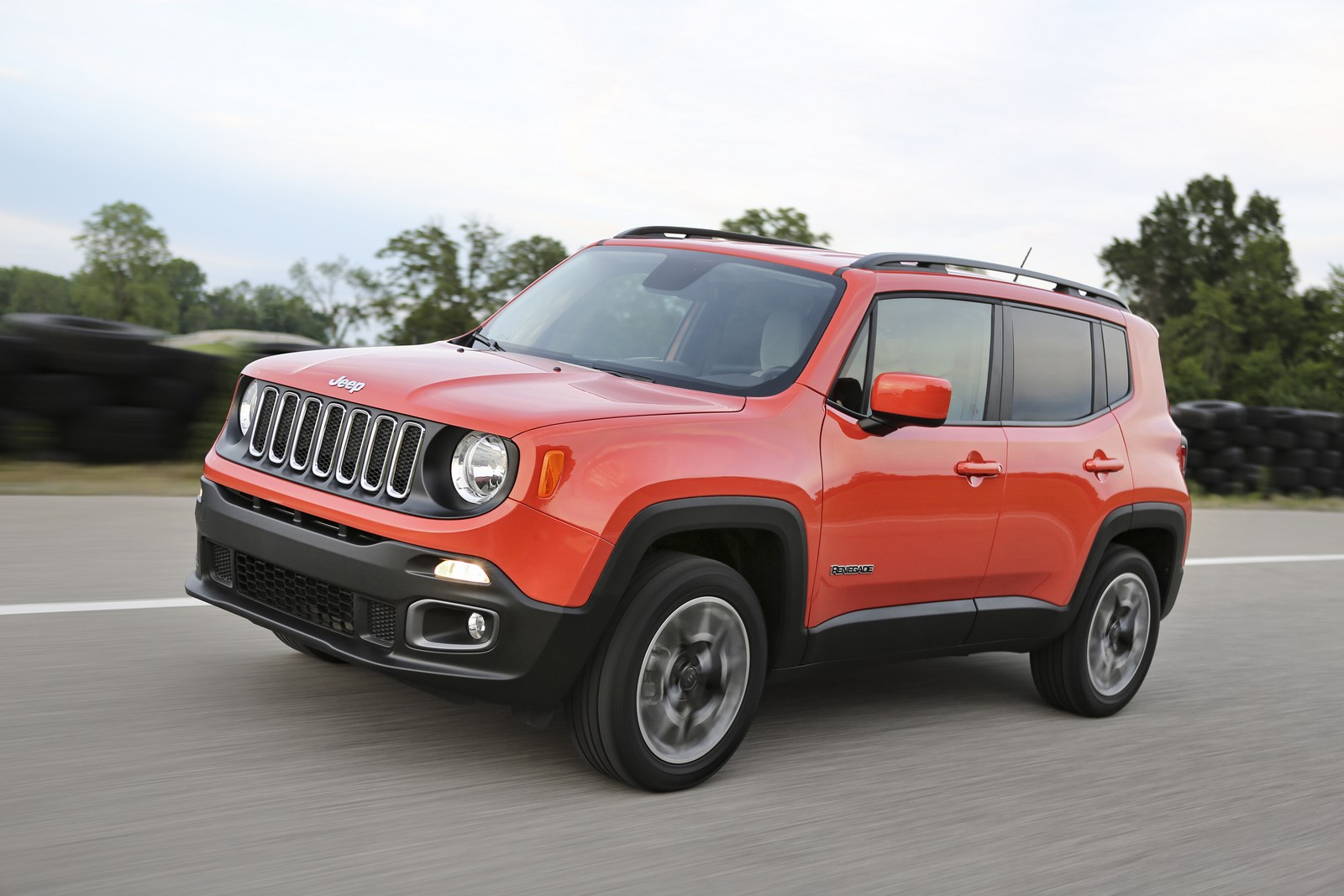
With a starting price of $20,100 for a four-wheel-drive model, the Renegade offers two engine options: a turbocharged 1.4-liter four-cylinder that produces 160 hp and achieves a combined 26 mpg (notably available with a manual transmission and all-wheel drive), or a 2.4-liter four-cylinder engine delivering 180 hp with a less impressive 24 mpg combined.
While the Renegade isn’t especially quick, it offers a surprisingly refined driving experience and features a well-designed interior filled with clever hidden easter eggs.
The Jeep Renegade stands apart from most subcompact crossovers by offering genuine off-road capability and a rugged, tough-guy aesthetic. As the smallest member of the Jeep family, it takes cues from the brand’s iconic Wrangler but packages them in a more accessible and approachable design.
While both of its four-cylinder engine options are on the underwhelming side, the Renegade does come standard with a six-speed manual transmission and features a capable all-wheel-drive system. Inside, its durable cabin can be fitted with various Uconnect infotainment systems, and while Apple CarPlay and Android Auto are not standard, they are available as options.
Although we’ve previously highlighted vehicles like the Kia Soul and Mazda CX-3 for their engaging on-road driving dynamics, the Renegade channels similar excitement off the beaten path and offers a genuine taste of the Jeep lifestyle.
For 2018, the Renegade lineup sees some minor updates. The Deserthawk trim, previously a limited-edition variant of the Trailhawk, has been dropped. Other changes are modest but helpful. The infotainment systems have been refreshed, and several components in the cabin have been redesigned.
Jeep has updated the climate controls, repositioned the Selec-Terrain rotary knob and a USB port, and introduced additional storage cubbies in the front-seat area. The entry-level Sport model now includes a standard 5.0-inch touchscreen that features Bluetooth connectivity and voice control.
Other models benefit from a standard 7.0-inch unit that includes Apple CarPlay and Android Auto, while an 8.4-inch touchscreen with navigation and remote smartphone control apps is available as an option. A new dual-pane power sunroof is also part of the optional equipment for 2018.
When it comes to pricing, the 2018 Renegade’s original MSRP starts at $20,245 for the base Sport model. The Latitude trim comes in at $23,590, followed by the Altitude at $24,385. The Upland Edition is priced at $25,565, while the Limited jumps to $27,885. Sitting at the top of the range is the Trailhawk, which carries a price tag of $28,590.
Performance-wise, the Renegade stays true to Jeep’s rugged roots, but don’t expect refinement from its two available four-cylinder engines. Power delivery is modest at best, and the drivetrains can feel strained under load.
Buyers have a choice between a 160-hp turbocharged 1.4-liter inline-four, which only comes with a six-speed manual transmission, or a 180-hp 2.4-liter inline-four paired with a nine-speed automatic. Two different all-wheel-drive systems are offered: Active Drive and the more capable Active Drive Low.
While the Renegade isn’t designed for high-speed thrills on pavement, it performs better than expected in daily driving. Those prioritizing an exciting on-road experience will find more enjoyment in the turbocharged Kia Soul or Mazda CX-3, which deliver better acceleration and sharper handling.
That said, while the Trailhawk version can ride a bit firmly due to its off-road focus, most other trims offer a composed and comfortable driving experience. Steering is responsive, and surprisingly, the boxy little Jeep displays limited body roll through corners—defying expectations for a vehicle that looks like a tree ornament.
Moving to the cabin, the Renegade’s interior design matches the quirky and adventurous spirit of its exterior. It seems to have been crafted to please that part of the brain responsible for giving names and personalities to action figures. The cabin features whimsical shapes, playful trim pieces, and clever Easter eggs—like maps embedded into the cupholders and the phrase “SINCE 1941” molded into the dashboard.
For 2018, the center stack has been redesigned, and the climate controls now better reflect those found in more mature Jeep models. While the overall design might feel a bit gimmicky to some, the layout is straightforward and intuitive.
Controls are placed exactly where you expect them, and a passenger-side grab bar pays tribute to the Wrangler’s rugged nature, as do the grille and headlights subtly stamped into the speaker housings. Functionality is decent: the rear seats fold flat to create a level cargo floor, although overall cargo space remains average for the segment.
Storage solutions are limited in the front, where there are fewer cubbies and the absence of a full-length door pocket. Things don’t improve much in the back seat either—rear passengers are left with little more than a small bottle holder in the door, leaving the Renegade short on interior storage compared to competitors.
2019 Mazda CX-3
If you’re in the market for an affordable and fuel-efficient SUV that also offers an engaging driving experience, the Mazda CX-3 deserves your attention.
Although its specs might not stand out on paper with just 148 hp from a naturally aspirated 2.0-liter four-cylinder engine like many of Mazda’s vehicles, it impressively delivers more than the numbers suggest.
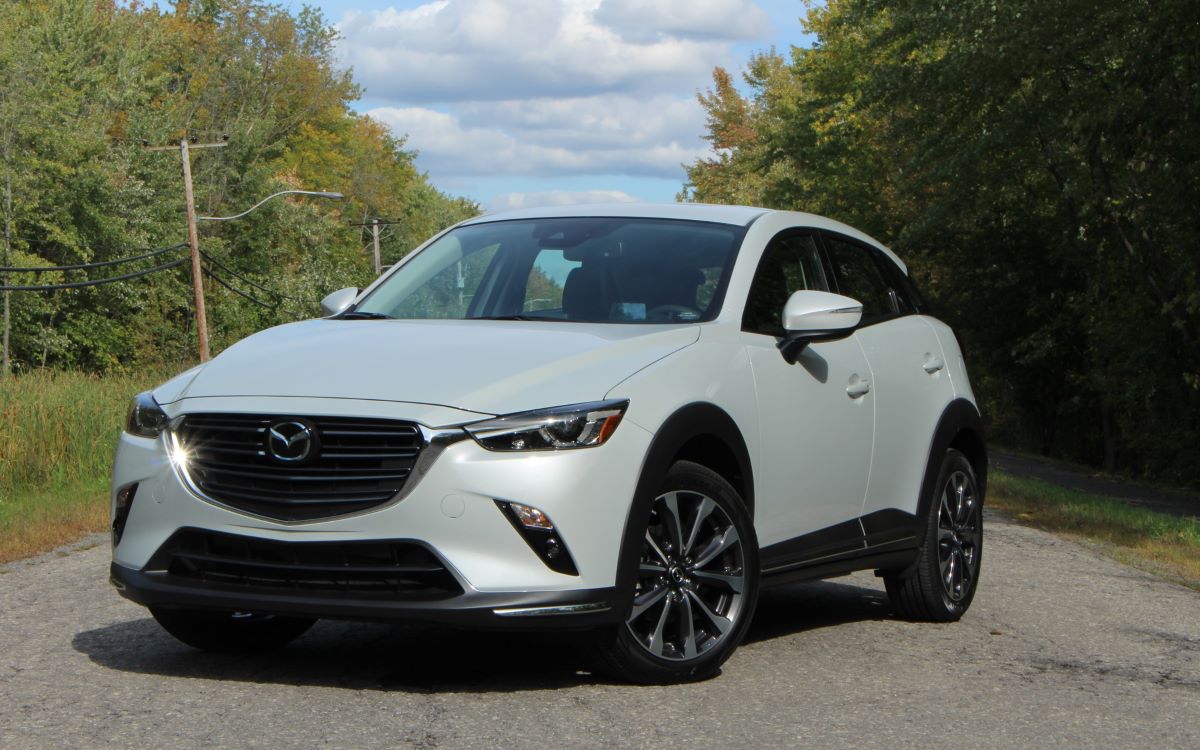
This includes an all-wheel-drive starting price of $21,790 and a combined fuel economy rating of 29 mpg.
Rather than relying on a complex and costly forced-induction setup, the CX-3 focuses on maximizing efficiency and minimizing weight.
As with many subcompact crossovers, the rear seat and cargo area are tight, but if you can sacrifice the space, the CX-3 will put a smile on your face.
2019 Mercedes-Benz GLA
The Mercedes-Benz GLA, starting at $35,950 for the all-wheel-drive version, is the priciest vehicle on our list.
Most trims come equipped with a 208-hp turbocharged 2.0-liter four-cylinder engine that delivers a combined fuel economy of 26 mpg.
For those seeking more performance, there’s the AMG GLA 45, which features a 375-hp variant of the same engine, capable of accelerating from 0 to 60 mph in just 4.4 seconds while still achieving an average of 25 mpg combined.
Although the ride can feel somewhat firm and the rear seat and cargo space are on the smaller side, the GLA truly excels in handling, particularly in the AMG models.
The GLA250 is powered by a turbocharged 2.0-liter four-cylinder engine that generates 208 horsepower, paired with a seven-speed automatic transmission.
Front-wheel drive comes standard, while all-wheel drive (4Matic) is offered as an option. Although the output might not sound particularly aggressive, the engine performs impressively well when kept in the higher rev range. In casual, low-speed city driving, however, the GLA can feel underpowered.
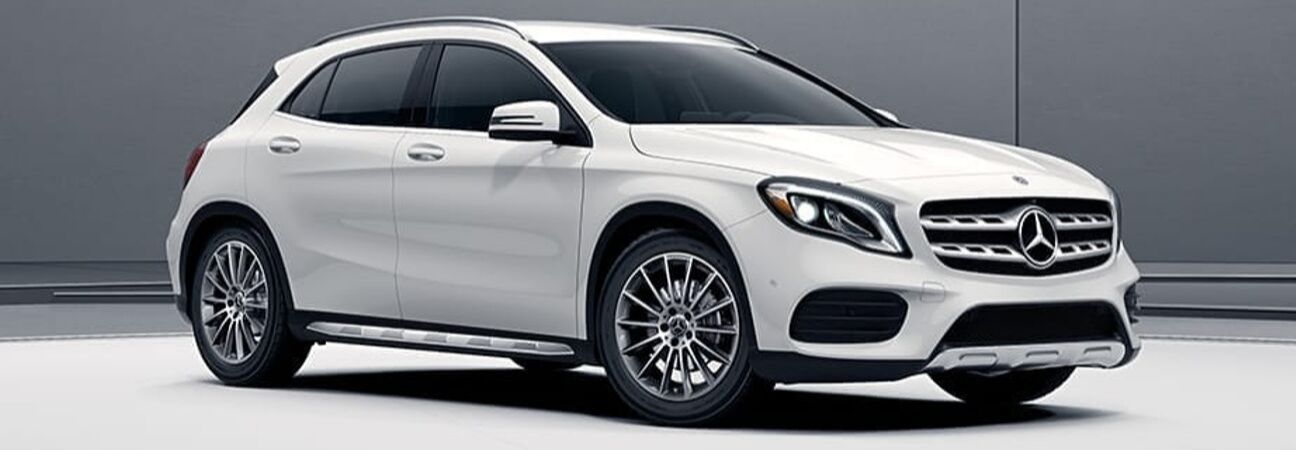
On the test track, our all-wheel-drive GLA250 surprised us with a rapid 5.8-second sprint from zero to 60 mph, aided by a launch-control feature—an uncommon asset in this segment of SUV lookalikes. In comparison, the BMW X1 posted a best time of 6.3 seconds.
Thanks to the GLA250’s elevated ride height, some body roll is noticeable during cornering. That said, the vehicle delivers sharp and engaging handling. T
he chassis feels responsive and spirited when driven aggressively, but it doesn’t take much to remind you that the GLA250 is not intended to be a true sports car. Its firm suspension tuning results in a bumpy experience over uneven pavement and occasionally causes a choppy ride at highway speeds.
The steering is light and accurate, though a bit more weight in the steering feel would improve driver confidence. Around-town maneuvering, on the other hand, benefits from the light steering effort, making the trade-off an acceptable one.
2018 Mini Countryman
The Mini Countryman offers a surprisingly spacious interior for a vehicle carrying the Mini name, yet it is not based on the smaller Mini hatchback.
Instead, it shares its platform with the BMW X1, which helps explain its starting price of $28,900 for the all-wheel-drive ALL4 version.
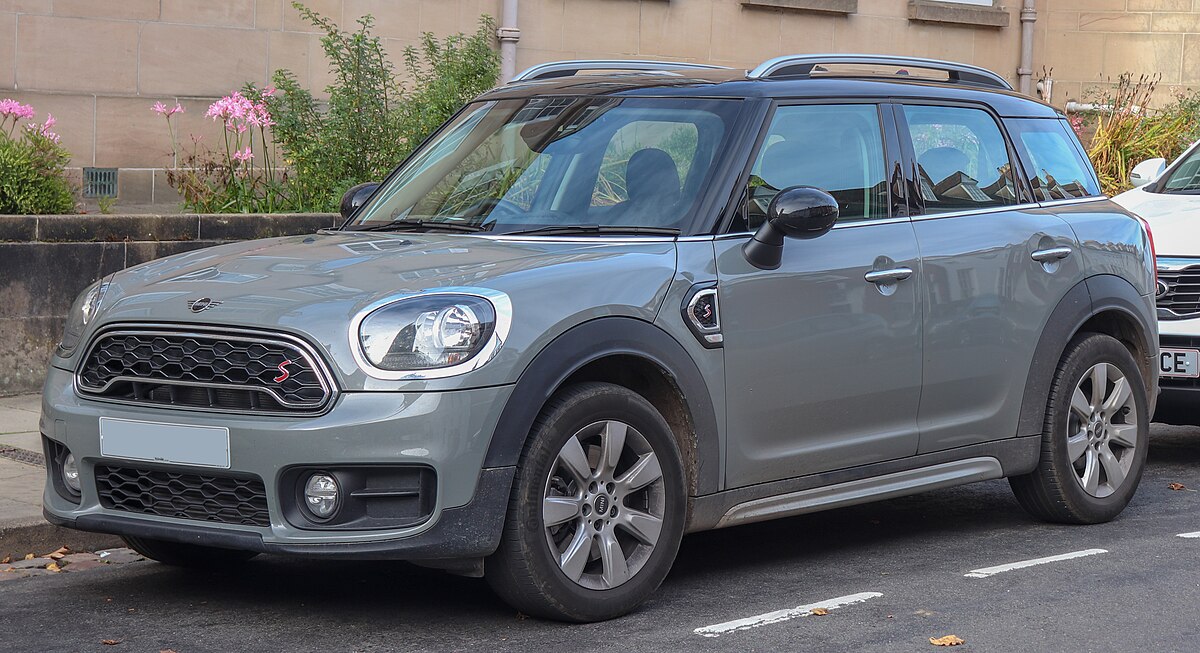
Several powertrain options are available, starting with the standard 134-hp turbocharged 1.5-liter three-cylinder engine, which achieves 26 mpg combined in all-wheel-drive trim.
At the higher end, the John Cooper Works model features a 228-hp turbocharged 2.0-liter four-cylinder engine, delivering 24 mpg combined with a manual transmission.
Additionally, there is a plug-in hybrid all-wheel-drive model that offers 12 miles of electric-only range and a combined fuel economy rating of 27 mpg after that.

